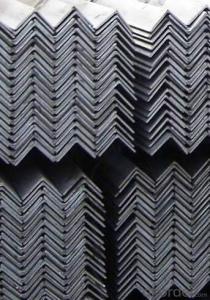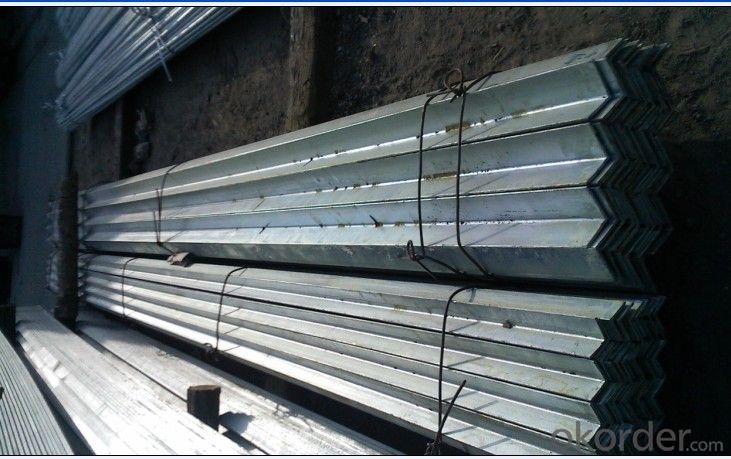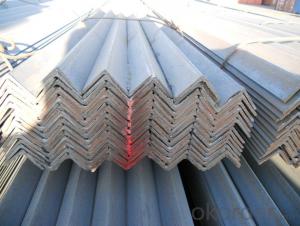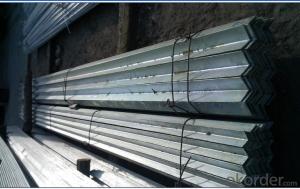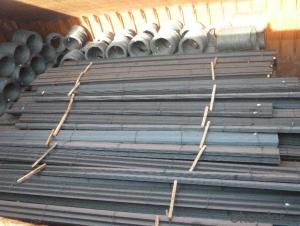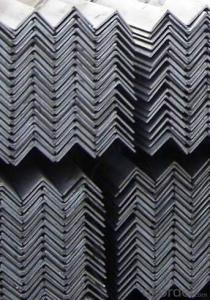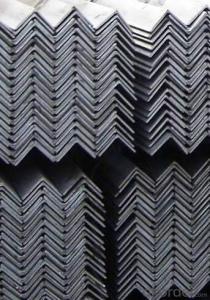BS STANDARD HIGH QUALITY HOT ROLLED ANGLE
- Loading Port:
- Tianjin
- Payment Terms:
- TT OR LC
- Min Order Qty:
- 50 m.t.
- Supply Capability:
- 100000 m.t./month
OKorder Service Pledge
OKorder Financial Service
You Might Also Like
Product Description
Appearance: Black
Technique: Slitting hot rolled steel coil
Grade: Q235, Q195,A36 SS400 S235jr.St37-2
Standard: AISI,GB,DIN,ASTM,EN,JIS
Length: 6m, 9m, 12m or as your requirement.
Width: 10mm-1010mm
Thickness: 1.5mm-20mm
Place of origin: Tianjin China (Mainland)
Packaging Details: In bundles for exporting and sea worthy
Delivery Detail: Within 15-35 days after receiving L/C or deposite T/T
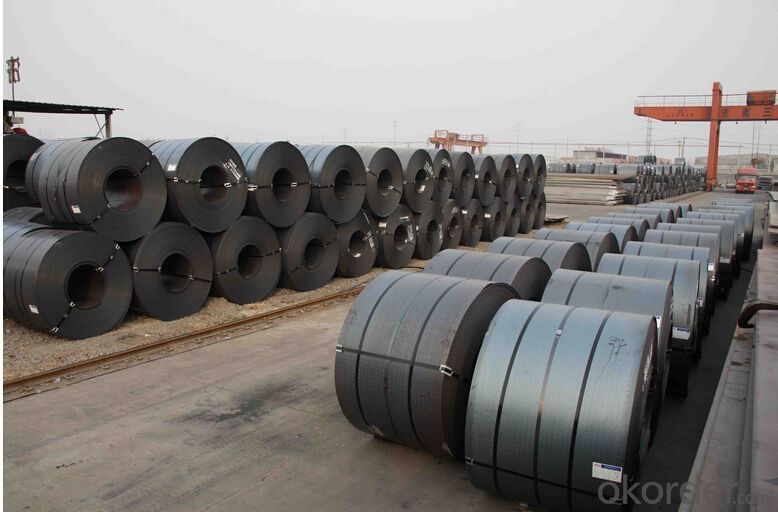

General specification as below:
Flat Bar Specification | |||
Width (mm) | Thickness (mm) | Length (m) | Theoretical Weight (kg/m) |
20 | 2.0 | 6/9/12 | 0.31 |
20 | 2.5 | 6/9/12 | 0.39 |
20 | 2.75 | 6/9/12 | 0.43 |
25 | 2.5 | 6/9/12 | 0.49 |
25 | 3.75 | 6/9/12 | 0.74 |
30 | 2.5 | 6/9/12 | 0.59 |
30 | 3.5 | 6/9/12 | 0.82 |
30 | 9.75 | 6/9/12 | 2.30 |
40 | 3.5 | 6/9/12 | 1.10 |
40 | 4.75 | 6/9/12 | 1.50 |
40 | 11.75 | 6/9/12 | 3.69 |
50 | 2.75 | 6/9/12 | 1.08 |
50 | 4.5 | 6/9/12 | 1.77 |
50 | 9.75 | 6/9/12 | 3.83 |
60 | 5.5 | 6/9/12 | 2.60 |
60 | 7.5 | 6/9/12 | 3.53 |
60 | 11.5 | 6/9/12 | 5.42 |
80 | 5.5 | 6/9/12 | 3.45 |
80 | 7.5 | 6/9/12 | 4.71 |
80 | 11.75 | 6/9/12 | 7.38 |
100 | 3.25 | 6/9/12 | 2.55 |
100 | 4.75 | 6/9/12 | 3.73 |
100 | 7.5 | 6/9/12 | 5.89 |
120 | 9.75 | 6/9/12 | 9.18 |
120 | 11.75 | 6/9/12 | 11.07 |
150 | 9.75 | 6/9/12 | 11.48 |
150 | 11.5 | 6/9/12 | 13.54 |
150 | 13.5 | 6/9/12 | 15.90 |
160 | 11.75 | 6/9/12 | 14.76 |
200 | 9.5 | 6/9/12 | 14.92 |
250 | 5.75 | 6/9/12 | 11.28 |
340 | 7.75 | 6/9/12 | 20.68 |
Products Advantages
1. high quality competitive price and Accurate in size
2. high dimensional accuracy
3. Guaranteed raw material
4.high utilization rate of material
5.convenient in construction, saving much time and labor
6. high mechanical strength
Application: Widely used for construction, Ship building, Machinery manufacturing ,steel structure,agriculture and steel grating.
- Q: Where can steel angles be purchased?
- Steel angles can be purchased from a variety of sources. One option is to visit a local hardware store or building supply center that specializes in construction materials. These stores typically carry a wide range of steel products, including steel angles. Another option is to search online for suppliers or distributors that specialize in steel products. Many online retailers offer a wide selection of steel angles and provide the convenience of shopping from home. Additionally, contacting local steel fabrication companies or metal suppliers could be a good option, as they often sell steel angles in various sizes and grades. It is recommended to compare prices, quality, and reviews before making a purchase to ensure getting the best deal and product suitable for the intended use.
- Q: Can steel angles be used in high-temperature applications?
- Steel angles can be used in high-temperature applications depending on the specific alloy and the temperature range. Steel alloys that have been specifically designed for high-temperature applications, such as stainless steels or heat-resistant alloys, can withstand elevated temperatures without significant loss in strength or structural integrity. These alloys often contain elements like chromium, nickel, or molybdenum, which increase their resistance to corrosion, oxidation, and high temperatures. However, it is important to note that not all steel angles are suitable for high-temperature applications. Ordinary carbon steels, for example, have a limited temperature range before they start to lose strength and become susceptible to deformation or failure. The exact temperature limit for a specific steel angle will depend on factors such as the alloy composition, heat treatment, and the duration of exposure to high temperatures. In summary, steel angles can be used in high-temperature applications if they are made from appropriate alloys that are specifically designed for such conditions. It is crucial to consult with materials engineers or experts who can provide guidance on the suitable steel alloys and temperature limits for a given application to ensure safe and reliable performance.
- Q: Can steel angles be used in the construction of religious institutions?
- Certainly, religious institutions can utilize steel angles in their construction projects. Given their strength, versatility, and durability, steel angles are widely employed in various construction endeavors. They not only provide structural support but can also be applied in framing, roofing, and reinforcing, among other applications. In the context of erecting religious institutions, steel angles can serve as the foundation for walls, roofs, and floors, while also lending support to architectural elements like domes or spires. Moreover, steel angles can be easily fabricated and tailored to meet specific design specifications. In summary, the use of steel angles in constructing religious institutions ensures the resilience and longevity of the edifice, while allowing for artistic ingenuity and adaptability.
- Q: Are steel angles vulnerable to rusting?
- Yes, steel angles are vulnerable to rusting. Steel is primarily made of iron, which is highly susceptible to rusting when exposed to moisture and oxygen. If the steel angles are not properly protected with a corrosion-resistant coating or paint, they can easily develop rust over time. This can weaken the structural integrity of the angles and ultimately compromise their functionality. Regular maintenance and appropriate rust prevention measures, such as painting or galvanizing, should be undertaken to mitigate the risk of rusting and prolong the lifespan of steel angles.
- Q: How are steel angles protected during transportation and storage?
- Steel angles are protected during transportation and storage through various measures to prevent damage and ensure their quality. One common method is to apply a protective coating or paint to the surfaces of the steel angles. This coating acts as a barrier against moisture, preventing rust and corrosion. Additionally, steel angles can be wrapped in plastic or covered with a tarp to shield them from dirt, dust, and other contaminants. During transportation, steel angles are often secured in bundles or stacked in a way that minimizes the risk of shifting or falling. They may also be placed on pallets or skids for easier handling and to avoid direct contact with the ground. When stored, steel angles should be kept in a dry and well-ventilated area to prevent moisture buildup. Furthermore, proper labeling and handling instructions are important to ensure that steel angles are not mishandled or damaged during transportation. This includes using appropriate lifting equipment and avoiding rough handling that could cause bending or deformation. By implementing these protective measures, steel angles can be safeguarded during transportation and storage, maintaining their quality and integrity until they are ready to be used.
- Q: Do steel angles require any special maintenance?
- Steel angles do not require any special maintenance, but proper care and attention can help prolong their lifespan. Regular cleaning to remove dirt, debris, and corrosive substances is recommended. It is also important to inspect the angles for any signs of rust, cracks, or damage, and address them promptly to prevent further deterioration. Applying a protective coating or paint can help prevent corrosion and extend the life of the steel angles. Overall, while steel angles are generally low-maintenance, regular inspections and maintenance practices can help ensure their optimal performance and longevity.
- Q: How do you determine the required thickness of a steel angle for a specific application?
- To determine the required thickness of a steel angle for a specific application, several factors need to be considered. Firstly, it is essential to determine the load or weight that the steel angle will be subjected to. This includes both the dead load (the weight of the steel angle itself) as well as any live loads (external forces or loads applied to the angle). Next, the span or distance between supports needs to be determined. The greater the span, the higher the bending moment and deflection that the steel angle will experience. Once the load and span are known, it is necessary to calculate the maximum allowable stress or bending moment that the steel angle can withstand. This is typically done using engineering formulas or structural analysis software. The maximum allowable stress is determined based on the steel's yield strength and safety factors. Using the maximum allowable stress and the bending moment, the required section modulus of the steel angle can be calculated. The section modulus is a measure of the angle's resistance to bending and is directly related to its thickness. Finally, the required thickness of the steel angle can be determined by selecting a standard angle size that has a section modulus equal to or greater than the calculated value. It is crucial to note that other considerations, such as corrosion protection, fire resistance, and aesthetics, may also influence the selection of the steel angle thickness. Therefore, consulting structural engineers or following relevant building codes and standards is highly recommended to ensure the safety and performance of the steel angle in a specific application.
- Q: Can steel angles be used in sports or recreational facilities?
- Yes, steel angles can be used in sports or recreational facilities. Steel angles are commonly used in the construction of various structures, including sports facilities such as stadiums, gymnasiums, and indoor arenas. They provide strength, durability, and support for the construction of grandstands, bleachers, and other seating arrangements. Additionally, steel angles can be utilized in the fabrication of equipment and fixtures like goal posts, basketball hoops, and fencing, further demonstrating their versatility in sports and recreational settings.
- Q: How many meters is one angle steel?
- Angle called angle, the steel strip is perpendicular to each other on both sides into the corner. There are equal angles and unequal angles. The two sides of an equal angle steel are equal in width. The specifications are expressed in millimeters of edge width * edge width * edge thickness. Such as "/ 30 x 30 x 3", that is 30 mm width equal angle, edge thickness of 3 mm. Also available models that model is the number of centimeters wide, such as angle 3#. The model does not mean the size of the different edges and sizes of the same model. Therefore, the width, the edge and the thickness of the angle iron should be filled out in the contract and other documents, so as not to be indicated by the model alone.
- Q: What are the typical lifespan and durability of steel angles?
- The typical lifespan and durability of steel angles can vary depending on various factors such as the quality of the steel, the environment in which they are used, and the level of maintenance they receive. However, steel angles are known for their excellent durability and long lifespan. In general, steel angles are designed to withstand heavy loads and provide structural support in various construction and industrial applications. They are commonly made from carbon steel or stainless steel, both of which are known for their strength and resistance to corrosion. When properly maintained and protected against corrosion, steel angles can last for several decades without significant deterioration. Regular maintenance practices such as cleaning, painting, and applying protective coatings can help extend their lifespan even further. The durability of steel angles is also influenced by the environment in which they are installed. In harsh environments with high levels of moisture, extreme temperatures, or exposure to chemicals, the lifespan may be shorter. However, proper corrosion protection measures can mitigate these effects and ensure a longer lifespan. It is worth noting that steel angles used in marine or offshore applications may have a shorter lifespan compared to those used in less corrosive environments. This is due to the constant exposure to saltwater and harsh weather conditions, which can accelerate corrosion. In summary, steel angles are known for their durability and can have a long lifespan if properly maintained and protected against corrosion. However, the specific lifespan can vary depending on factors such as the quality of the steel, environmental conditions, and maintenance practices.
Send your message to us
BS STANDARD HIGH QUALITY HOT ROLLED ANGLE
- Loading Port:
- Tianjin
- Payment Terms:
- TT OR LC
- Min Order Qty:
- 50 m.t.
- Supply Capability:
- 100000 m.t./month
OKorder Service Pledge
OKorder Financial Service
Similar products
Hot products
Hot Searches
Related keywords
